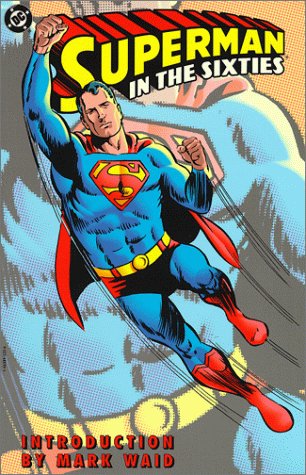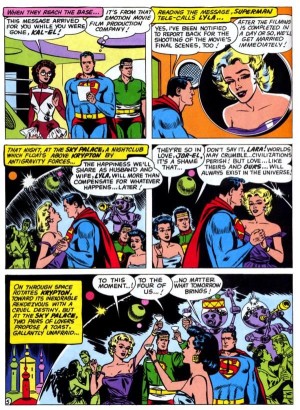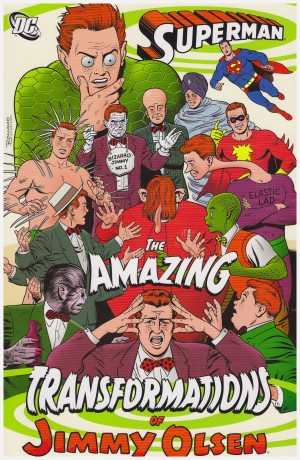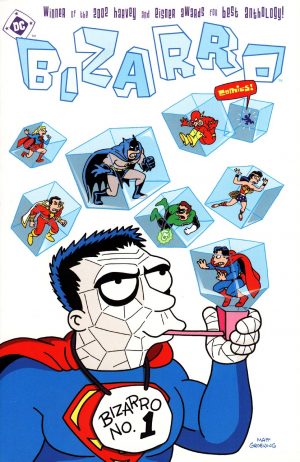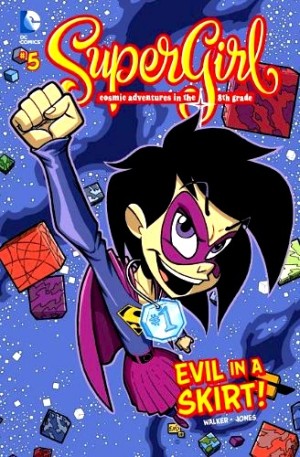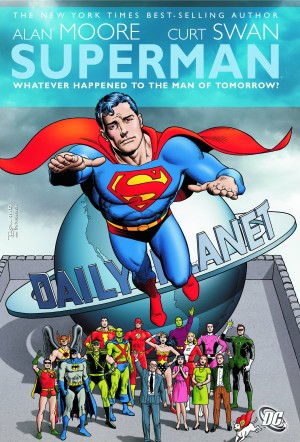Review by Frank Plowright
By the 1960s Mort Weisinger, the editor of Superman’s titles, had refined a formula for commercial appeal to the youngsters of the era, developing an enormous, and by today’s standards eccentric, mythology. This involved a virtuous, but anodyne Superman outwitting Lois Lane time after time as she attempted to reveal him as Clark Kent, dreams and imaginary stories about Krypton, fantastic devices and concepts, and numerous shades of kryptonite, each of which had a different effect on Superman. For an insight into Weisinger and his methods, there’s a remarkable 1975 interview online. There’s no doubt that Weisinger was an intensively creative man able to conceive plot after plot for his characters, but there are also accusations that he wasn’t above passing off plots from other writers as his own.
It’s the era of sublime silliness that this collection concentrates on, somewhat belying its title by publishing only the single story dating beyond 1964. The opening tale codifies Superman’s life from a Kryptonian infancy to his departure from Smallville, after which we have time travel, imaginary stories, Lex Luthor at his most nefarious, Jimmy Olsen’s transformations, Lois Lane, baby Superman, and Bizarros playing pranks on halloween. There’s a primal rush to this material. Brainiac kidnaps the infant Kal-El! Jimmy Olsen travels to the past to become ‘The Red-Headed Beatle of 1000BC’! The tragedy of Superman’s last days! Superman without powers battles Lex Luthor! Supergirl determines to find a wife for Superman!
The most genuinely affecting tale is when Superman returns to Krypton around 18 months before it explodes. How he arrives there isn’t considered important, a single panel explaining he flew so fast he broke the time barrier, and once there he hangs out with his parents, intervenes in the lives of his foster parents on Earth, and romances the planet’s most celebrated actress. It’s underpinned, though, by a genuine tension as Superman’s aware of the planet’s limited lifespan, yet on Krypton he’s devoid of super powers. There’s an extra layer to this tale, as it’s written by Superman’s co-creator Jerry Siegel, now having to work for the tyrannical Weisinger as his creation earns millions of dollars for DC. It’s difficult not to see Seigel’s own wish things had turned out differently echoed in the way he wrote the story.
‘Superman’s Mission for President Kennedy’, produced with Kennedy’s co-operation to promote his physical fitness programme was originally pulled after Kennedy’s assassination, but White House officials gave permission for publication to proceed. It’s an interesting curiosity, hardly subtle in hammering the message home.
Wayne Boring’s was still the house style for Superman, in 1964 still a time a way from his notoriously poorly handled dismissal by Weisinger, and most other artists take their lead from his clean and unfussy style. Curt Swan, Superman’s next pre-eminent artist was just slipping into the slightly more refined depiction of Superman that would define the character for almost twenty years from the mid-1960s. Clear storytelling was the hallmark, and the likes of George Papp, Al Plastino and Kurt Schaffenberger’s elegance all supply this. The one concession to changing times is the inclusion of a Neal Adams illustrated teaming of Superman and Batman from 1968, drawn in Adams’ trademark graphic style and looking completely different from anything else presented. Look behind the facade, however, and Leo Dorfman’s story is ordinary.
As with collections spotlighting Superman in other decades, this is well curated, contextualised by Mark Waid’s introduction, and offering a decent snapshot of the era.
